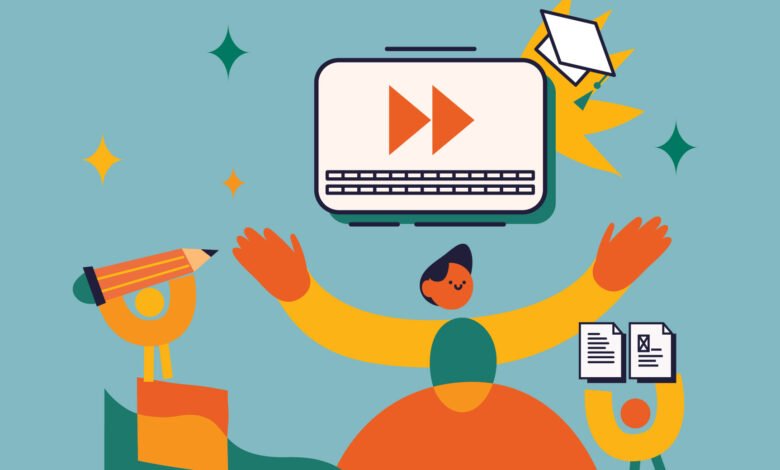
Animation has emerged lately and has come from being a medium for entertainment to being something an integral part of training in the corporate world or corporate education. US firms are very much interested now in animated content as an aspect of Custom eLearning Services in the enhancement of learning experiences. With animations, businesses have now also learned to engage employees; the ideas seem to come to life when complicated knowledge needs to be retained for further reference.
Why US-based companies use animation for learning
Let’s now see how US-based companies are using animation to promote better learning outcomes.
1. Better engagement and attention
One of the major benefits that animation in eLearning provides is the ability to keep learners focused and engaged. The content developed with animations will be so visually stimulating and appealing so that learners can get information dynamically. In the companies that offer Custom eLearning Services, the critical thing they do is ensure that creating an engaging experience for them keeps learners focused and on task in their training sessions.
Why it works
- Visual interest: Animations may catch and sustain a viewer’s attention much longer than static content.
- Storytelling using images: An animation can break down very complex things into simple, digestible bits, making them easier to understand.
- Engagement: Animated videos may not look “work-like” but rather more entertaining. That may increase the completion rates of the training programs.
2. Complex into simple
Most US industries require education on complex topics in healthcare, finance, or technology. The content has to be reduced, yet the core elements of the subject matter should be retained. This is the area where animation shines. In using Custom eLearning Services, businesses can leverage animated visual expressions to articulate complex matters of fact with clarity and concision.
Why it works
- Graphic illustration: Animations can illustrate conceptual concepts, such as a flow of data or structural formulas of molecules, simply not possible to explain in word form.
- Breakdown: Step-by-step process to make complicated processes easier and understandable for users by breaking a complex system into smaller understandings.
- Interactive education: Animations can offer quizzes and other interactive stuff that will improve understanding with better retention.
3. Active Learning and Retention
Animation has also been of help in promoting active learning. Active learning refers to the active involvement of learners with topics through application, analysis, and problem-solving instead of just the reception of information. When animation is integrated with Custom eLearning Services, an interactive environment is created where learners engage directly with the subject matter.
Why it works
- Scenario-based learning: There is a possibility of coming up with live-action scenarios that are expected of the learners to act within such a scenario as though the scenario were in their world. This boosts their critical thinking and improves how knowledge is applied.
- Simulation : Simulation of animated methods exposes students to procedures or acts and gives them time for their application in actual situation.
- Visual content : Several researchers have shown that people have a better recall ability through visual content rather than by reading. Visual contents have a better and strong recollection ability instead of learning by reading, just as animation does with one.
4. Wide Exposure
One of the significant advantages that animation provides for eLearning is the possibility of accessing a more cross-section area of learners due to every learner’s ability to learn differently. How people learn varies as there are different kinds of learners that is, some are visual, others are auditory, and some are hands-on learners. Using Custom eLearning Services, animation makes use of all these combined with the aspect of visualization, audio, and interaction to serve all learners.
Why it works
- Visual learners: Animation always caters to the interests of visual learners because the animation will represent graphic explanations of the concept.
- Auditory learners: Combining animation with voice-overs or sound effects can present an experience that satisfies auditory learners.
- Kinesthetic learners: Interactive animation helps kinesthetic learners by creating an opportunity to interact with the content, thus influencing the outcome of learning in a positive manner.
5. Scalability and Economies of Scale
Another critical reason why US-based companies are embracing animation for their eLearning approach is its scalability and cost-effective nature. Once created, animated content can be repeated, modified, or even scaled across various departments that make it a highly economical solution for long-term needs in training.
Why it works
- Reusable content: Unlike traditional means of training, which usually require physical instructors or even materials, animated content can use the same thing repeatedly without any additional costs on the part of the producers.
- Localization and customization: A company can easily translate the content into the local language or change visuals to suit specific cultures using Custom eLearning Services.
- Training consistency: With animations, the quality of training is uniform among employees regardless of their location, which is great for companies that operate in an international landscape or have a team distributed across wide areas.
Conclusion
US companies are adopting animation quickly as a core element of their Custom eLearning Services in order to enhance the process of training and developing employees. The use of animation helps break down the ideas, appeal to a range of learning styles, and facilitate active learning by scaling up the training effectively. Corporate learning will become dynamic, interactive content that keeps learners motivated and engaged; the future is indeed an excellent tool for that.
Key Takeaways
- Animation keeps the learners engaged and learning becomes a fun process which, in turn, helps to get better learner participation.
- Even complex concepts become easy to understand and retain.
- Companies are using animations for scenario-based learning and simulation to ensure active learning and improve memory retention.
- Animation helps cater to different types of learning, which is helpful in managing a diverse workforce.
- The scalability and the cost efficiency of animated content make it worthwhile for investments in long-term corporate training strategies.



